Family Hesperiidae Scientific name Astraptes fulgerator Rank Species | ||
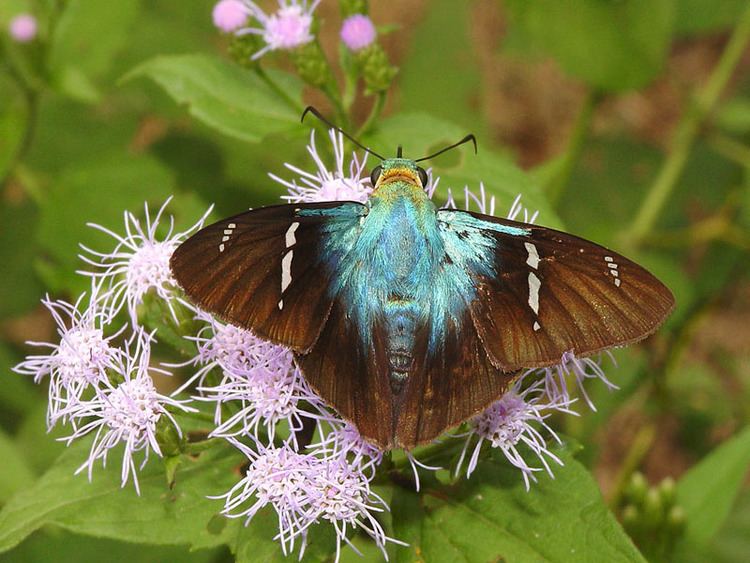 | ||
Similar Astraptes, Butterfly, Skipper, Butterflies and moths, Insect | ||
Astraptes fulgerator azul jdbotanicosp br 11 6 15 asilveira xvid
Astraptes fulgerator, the two-barred flasher, is a cryptic species complex in the spread-wing skipper butterfly genus Astraptes. It ranges all over the Americas, from the southern United States to northern Argentina.
Contents
- Astraptes fulgerator azul jdbotanicosp br 11 6 15 asilveira xvid
- Astraptes fulgerator puerto iguazuar 23 4 2015 antonio silveira
- Description
- Larval food plants
- Systematics
- DNA barcoding controversy
- Cryptic variation
- References
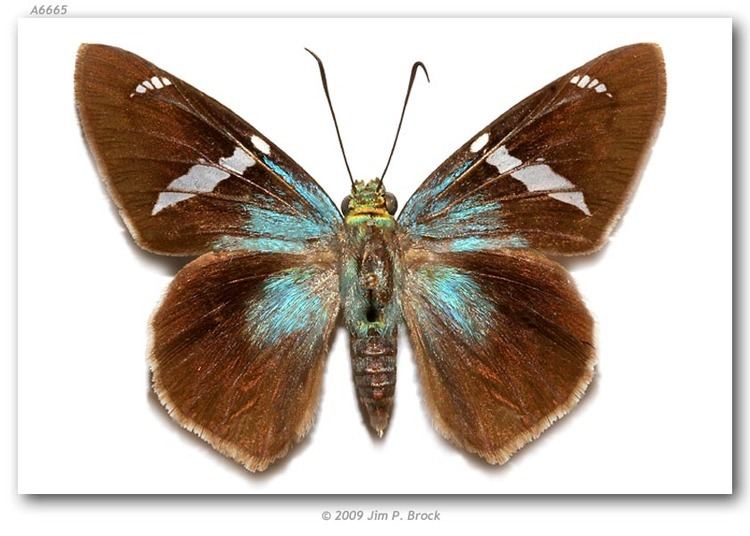
Astraptes fulgerator puerto iguazuar 23 4 2015 antonio silveira
Description
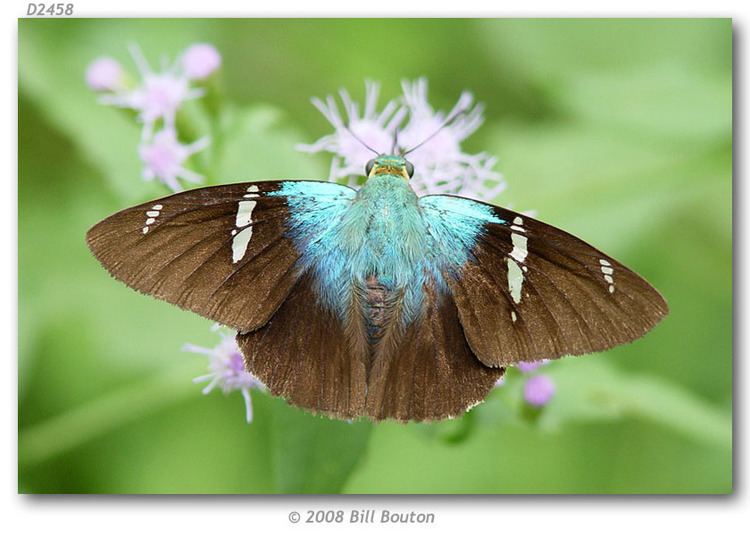
A. fulgerator's adults all look quite alike. They are mid-sized skipper butterflies with the typical wing shape of this group. The upperside is black, with basal to postbasal blue corners which are more extensive on the forewings. There is one discal-tomal and one apical band on the forewing; these are usually off white to light blue but the former may be quite white towards the costal margin. The thorax has bluish hair on the back, the underside is yellow to orange.

The caterpillars and pupae show a wide range of colors and patterns, and the caterpillars also vary in food preference. Last-instar caterpillars are black with a pattern consisting of light to bright yellow dots along the sides, or rings of varying thickness, sometimes interrupted on the back, in a range of colors varying from white to orange red.
Larval food plants
This species is highly polyphagous, with most food plants belonging to the Fabaceae (legume family):
Selected primary food plants
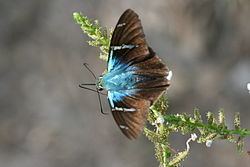
Selected secondary and accidental food plants
Systematics
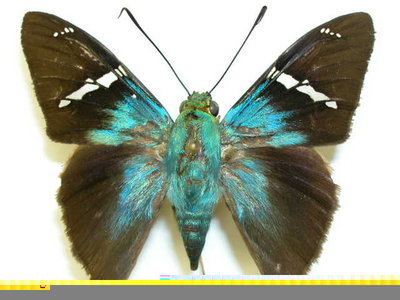
Due to the diversity of caterpillar colors and food plants it was long suspected that the butterflies referred to as Astraptes fulgerator might be more than a single species. COI DNA sequence data indicates that a number of populations are in various stages of reproductive isolation, and the taxonomy of these butterflies will probably be revised accordingly. Initial results seem to confirm that in one study area, at least three species or previously unrecognized subspecies are involved. Given the species complex' large range, considerable more emergent species and subspecies seem to await discovery.
DNA barcoding controversy
This butterfly has been subject of a pioneering DNA barcoding study of a 648 base pair sequence from COI, purportedly showing "that A. fulgerator is a complex of at least 10 species in [Area de Conservación Guanacaste World Heritage Site, NW Costa Rica]." A later reanalysis of the DNA sequence data using neighbor joining bootstrap, population aggregation analysis and cladistic haplotype analysis found that: "[a]t least three, but not more than seven mtDNA clades that may correspond to cryptic species are supported by the evidence." Also, "... sequences that [did] not fit the general host plant pattern were simply dismissed with an ad hoc and manifestly incorrect explanation" by Hébert and his coworkers. The improper use of taxonomic vocabulary was also criticized; Hébert et al. apply the terms "species" and "taxa" as if they were synonymous, but nowhere validly describe their proposed "species".
Cryptic variation
While the exact number of taxa involved is disputed, most of the "species" detected by the DNA barcoding study seem to be nothing more than morphs or incipient subspecies, coupled with a serious underestimation of variation. Still, two lineages appear to be well distinct and separable at least as subspecies:
"CELT" has larvae with bold orange bands in the last instar, which were recorded only on Celtis iguanaea (Ulmaceae). "TRIGO" last-instar larvae have bold yellow bands and were found on the Malpighiales Trigonia (T. arborea, T. laevia and T. rugosa) and, apparently accidentally, on Licania arborea.
Three more lineages are in need of further study. One ("NUMT") was initially dismissed as a numt pseudogene combined with sequencing error but may represent a hitherto unrecognized taxon. Two other lineages ("LOHAM" and "LONCHO") were considered highly distinct in the barcoding study but the reanalysis showed that this might just as well be in error. The latter two are peculiar in some aspects, such as apparently never having bands or orange colors in the last instar stage and showing a preference for Lonchocarpus costaricensis, Lonchocarpus oliganthus, and Hampea appendiculata as larval food but are not monophagous. They appear to be an intermediate stage in lineage sorting and might be considered one or two subspecies if the two most distinct lineages are split off as species.
The other lineages show a marked lack of agreement between morphological, ecological and genetical variation in the reanalysis of the supposed clusters. The entire range of caterpillar colors and patterns is found across one huge ill-structured cluster of genetic diversity. They are polyphagous, feeding preferentially on Inga and Senna as well as a variety of other plants, but apparently not on those preferred by the more distinct lineages except Hampea appendiculata.
The proposed divergence times for the lineages are derived from a standard molecular clock model, which is today known to be incorrect.
